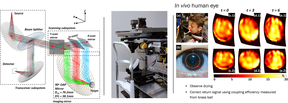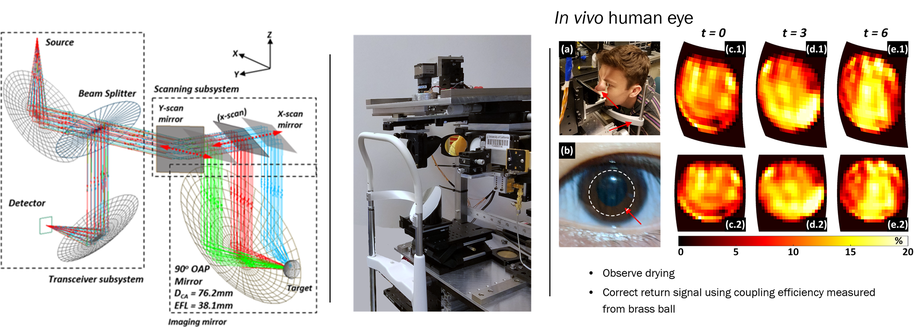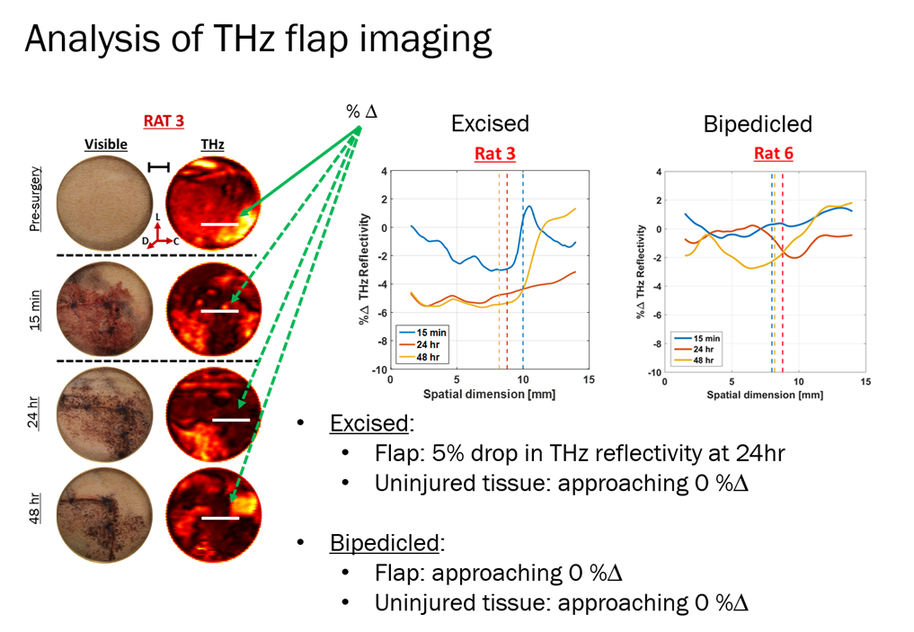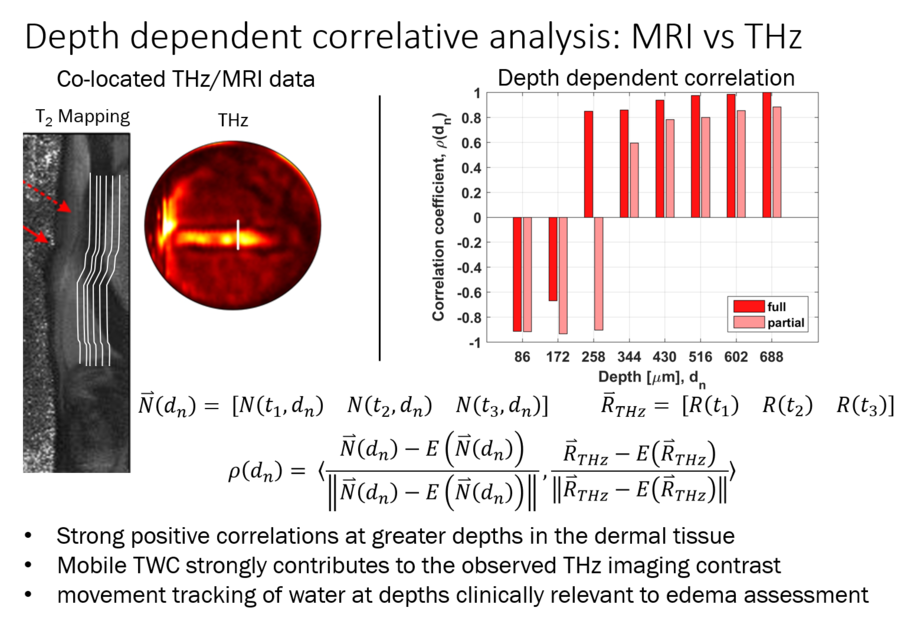Millimetre Wave and THz Techniques

We are technology agnostic and utilize both RF, multiplier-based components and optical, down conversion-based methods in equal measure. Further, we have extensive experience in quasioptic design, simulation, and fabrication that allow us to address standoff measurement challenges not accessible to most groups. These capabilities are supported by active quasioptical research with input provided by our collaborators in the radio science and antennas communities.
Our basic science work includes joint projects on submillimeter wave components and measurements under the guise of Millilab; a joint institute between VTT and Aalto University School of Electrical Engineering with ongoing funding from the European Space Agency (ESA). Current projects include the development of room temperature, on-wafer characterization in the 325 GHz top 500 GHz band. This is concurrent with design and characterization of cryogenic, quasioptical based measurement techniques in the 325 GHz top 500 GHz band.
One of our major application focuses is medical imaging where we build systems that produce sensitive and specific spatiotemporal maps of tissue water content. These maps are leveraged for early detection and ongoing monitoring of diseases and pathologies. The major breakthroughs achieved on these fronts were made possible by our close collaboration with industry and clinical partners. Medical applications under research include corneal water content measurement, burn severity assessment, and dermal graft rejection.

Research areas
Early detection of endothelial dystrophies in the cornea and corneal grafts
The cornea is the outermost optic of your eye is responsible for s the majority of the eye’s focusing power. The cornea lies on the surface of water volume called the aqueous humor. The corneal layers adjacent to the aqueous humor (endothelium) are responsible for maintaining the water volume of the cornea by actively pumping water across the barriers between the endothelium and aqueous humor. Many diseases, such as endothelial dystrophies, perturb the active pumping mechanisms and the cornea hyperhydrates due to diffusion. Late detection of cornea hyperhydration almost always leads to corneal graft surgery where the diseased endothelium is replaced with a donor endothelium. Donor endothelia can be rejected by the body and late detection requires the removal and the donor tissue with additional donor tissue. Currently, no methods to directly measure corneal water content exits thus early detection of endothelial dystrophies and corneal graft rejection are not possible. The geometry and ordered nature of cornea enable THz frequency thin film metrology (i.e. frequency domain ellipsometry) to extract corneal thickness and corneal water content simultaneously thus providing the first ever direct measurement of disease dependent corneal hydration.

Research area
Burn Severity assessment
Skin burns severity is generally divided into three, increasing severities: 1st, 2nd, and 3rddegree. 3rd degree burns often require surgical excision to remove dead tissue. It is often difficult to delineate 2nddegree from 3rddegree severities immediately following burn injury due to the buildup and redistribution of significant tissue edema. This further delays appropriate treatment and leads to poor outcomes. THz imaging generates sensitive a specific maps of injury edema and these maps provide information that enables accurate assessment of burn severity.

Surgical flap viability
Patients often require the transplantation of donor skin from a healthy area of the body to close wounds or surgical excisions. These sections of tissue are called “flaps” and they can become unviable if the blood supply is not successfully reestablished. Flap rejection significantly complicates wound healing and leads to substantial loss of function and is a detriment to aesthetics. Flap failure is hard to predict and most optical techniques are confounded by the presence of massive tissue edema. THz imaging generates sensitive a specific maps of injury edema and these maps provide information that enables early and accurate detection of flap failure.

Quasi-optical research
Traditional THz quasi-optical techniques are often applied to the design of systems whose target of interest is located a significant distance from the THz transceiver (e.g. radio astronomy, personnel screening). Further, these systems typically employ apertures that are on the order of 102 to 103 wavelengths in diameter. This orientation often produces broad depths of focus and some tolerable sensitivity to misalignment. In contrast, our medical imaging is more similar to microscopy where the tissue of interest is very close to the THz transceiver and practical constraints limit apertures to < 102 free space wavelengths. This setup results in very sharp depths of focus and extremely high sensitivity to misalignment. Since patients are always moving around, the performance optical system under misalignment is often more important than during alignment. Thus, our quasioptical system design and evaluation efforts are directed towards the understudied problem of tracking beam under when nothing is lying where it should.

System phenomenology research
We have pioneered the use of mixed technology, THz imaging systems. Our most commonly used architecture is a photoconductive switch source and a Schottky diode detector. The goal of this system is incoherent radiation detection (diode) with a low coherence source (switch) where the coherence effects, typical of swept source or time domain detection, are suppressed. This combination of components produces high resolution, low clutter images but creates interesting operational situations that are difficult to characterize. For example (1) The peak electric field coupled to the detector is many orders of magnitude beyond the breakdown voltage of the Schottky diode thus the component operates in the large signal, series resistance regime. (2) The self-complementary, spiral antenna generates a circularly polarized beam with ~ 200% bandwidth while the diode is mounted in a rectangular waveguide with a probe designed to couple to the TE10 mode. (3) The large signal operation and complex coupling combine to produce a signal whose spectral mapping is nearly intractable.

THz correlational imaging with T2 weighted MRI
Sensitivity and specificity to water in tissue has never been characterized. These parameters require a gold standard, in situ method of tissue water content of which there is only one: magnetic resonance imaging. Significant research is still needed to correlate our THz imaging data with MRI measurements. This task requires high magnetic fields and resolution of surface features; a combination that is rarely employed clinically. Basic research is ongoing to refine these correlative experiments.
Group members
Latest publications
Harnessing Frequency Diversity for Improved Holographic Imaging Systems
Curved boundary integral method and its application to Mie theory: Electromagnetic beam synthesis and scattering analysis
Curved boundary integral method for off-axis parabolic reflector analysis
Extended legality of curved boundary integral method
Calibration of a Two-Port Millimeter-wave Quasioptical Measurement System
Dual mirror optimized scanning for telecentric lens
Quantized THz Diffractive Optics Design via Automatic Differentiation
Ghost imaging at submillimeter waves: correlation and machine learning methods
Millimeter-wave techniques for the detection of corneal water content
Submillimeter-wave cornea phantom sensing over an extended depth of field with an axicon-generated Bessel beam
Contact:
Professor Zachary Taylor
Email: zachary.taylor at aalto.fi
Tel.: +358 50 595 5617
Postal address:
Department of Electronics and Nanoengineering
Aalto University School of Electrical Engineering
P.O. Box 15500, 00076 Aalto, Finland
Visiting address:
Maarintie 8, 02150 Espoo